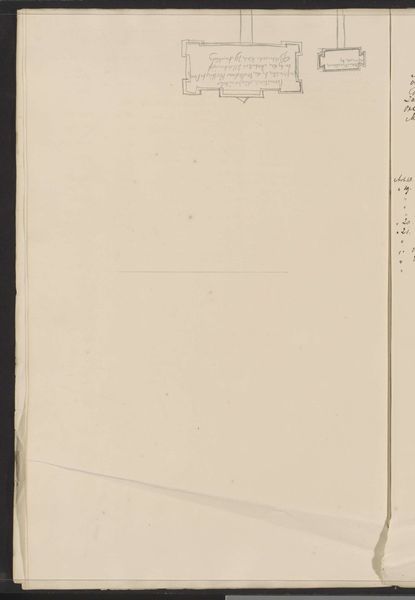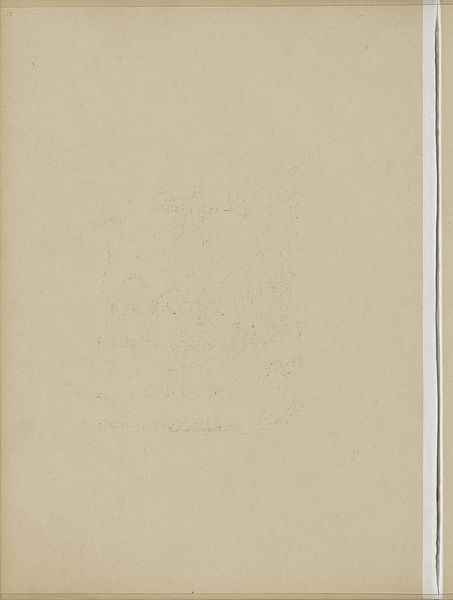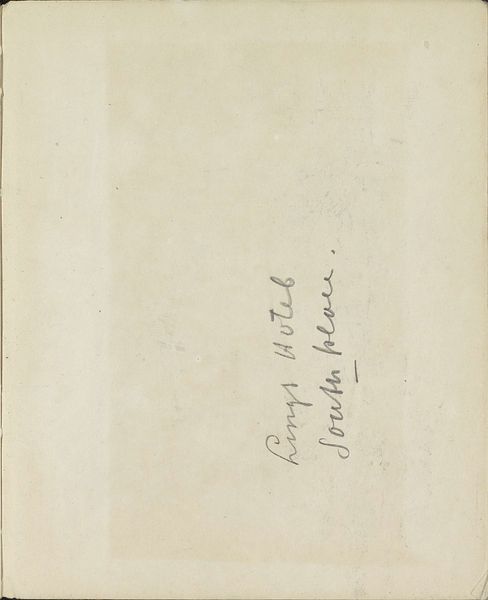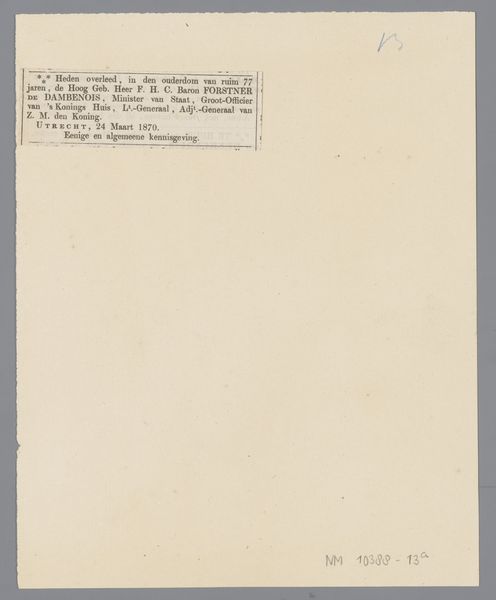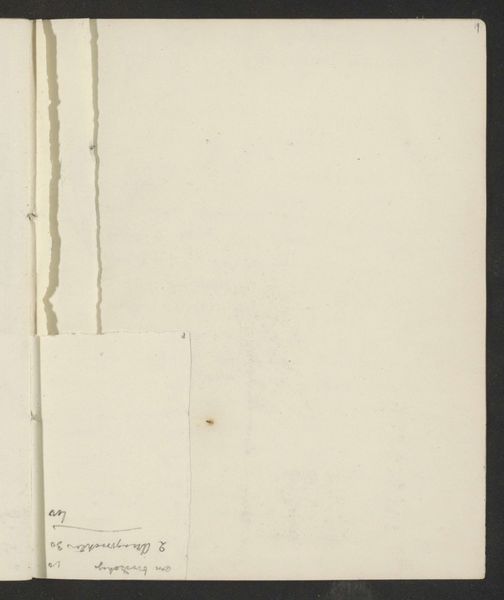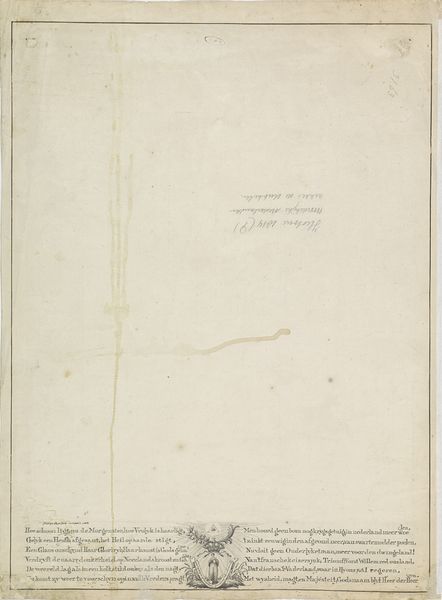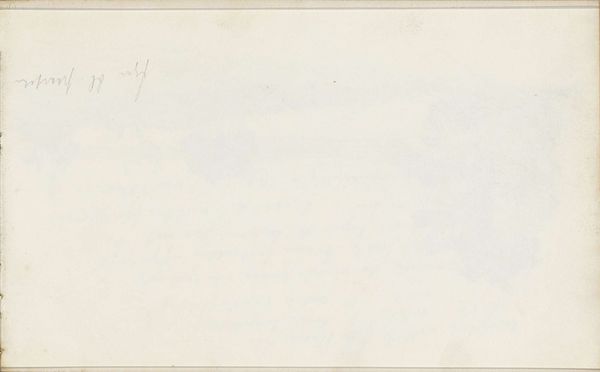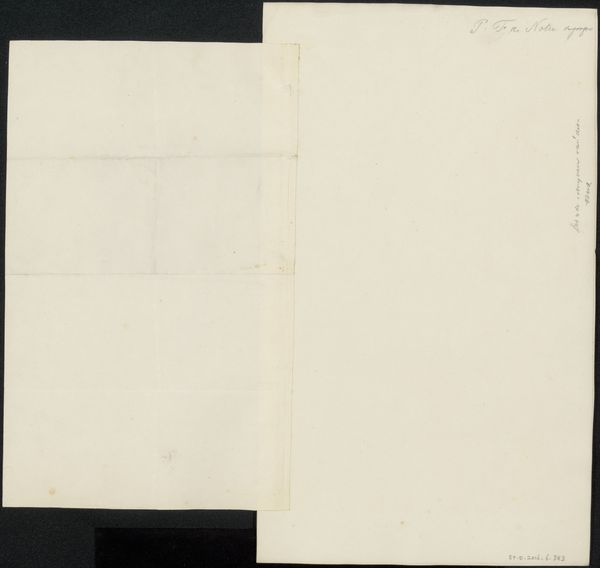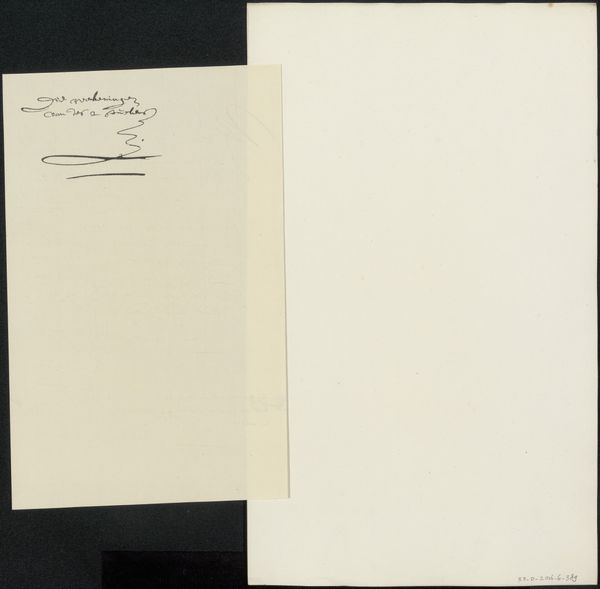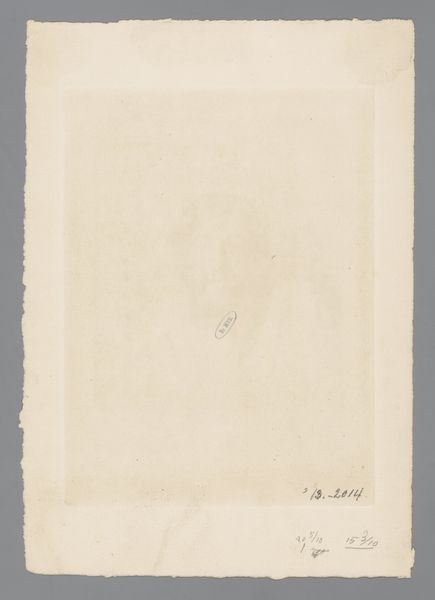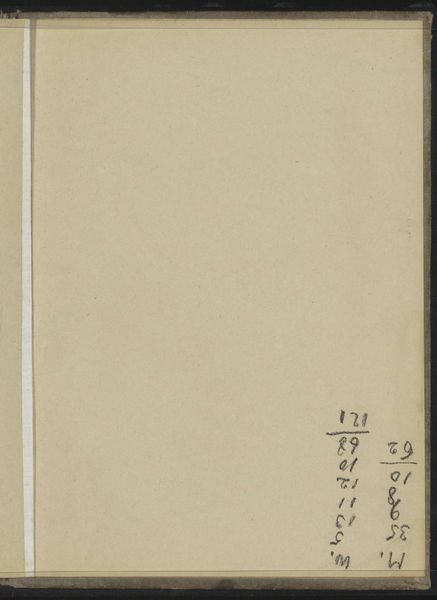
drawing, paper, ink
script typeface
drawing
aged paper
script typography
hand drawn type
personal journal design
paper
ink
thick font
handwritten font
golden font
classical type
letter paper
Dimensions: height 34 mm, width 55 mm
Copyright: Rijks Museum: Open Domain
Curator: This piece, dating from between 1900 and 1982, presents us with an “Ex Libris” design created for Jean Furstenberg. The medium seems to be ink on paper. It's delicate yet formal, would you agree? Editor: Yes, instantly I think of restrained luxury, the kind associated with private libraries and inherited wealth. There’s something so inherently personal about a bookplate, and that floral, ornamented border gives it a very distinctive air. I find myself pondering Furstenberg's position of privilege that allowed this commission to take place. Curator: Indeed. Bookplates, or “Ex Libris” as they're often known in Latin, traditionally signify ownership and often reflect the owner’s interests or family history. It functions almost like a family crest—a symbol to remind you of lineage. This design opts for a script typeface, suggestive of handwritten authenticity, and emphasizes identity through text. Editor: That script does convey a sense of established tradition, of a world deeply invested in handwritten communication as an expression of the self. But the presence of that almost invisible timestamp in the middle and the index number is an important contrast, introducing ideas around archival documentation of such artworks. What are the implications, Curator? Curator: The handwritten timestamp pulls the 'objectness' of a fleeting, and personalized form of information into permanence. If the Furstenberg library and this bookplate held certain associations, this document captures how something ephemeral is codified and categorized. I find myself speculating about the original symbolic significance it may have held in the culture and subconscious memory. Editor: Right. Think of how these visual markers reinforce established hierarchies! A commission for such an object assumes a degree of wealth, as well as perhaps signaling intellectual or artistic pursuits, solidifying social status. As for its historical meaning, perhaps, we should see how similar artistic movements affected bookplates more broadly? Curator: I completely agree that that’s one potential avenue for exploration. It offers us, doesn’t it, an intriguing intersection of art, personal identity, and social standing encapsulated within this modest yet richly symbolic creation. Editor: Definitely, an opportunity to explore further connections between class, status, and art that go beyond just personal meaning. The bookplate itself embodies a narrative, but one we must dissect. Curator: Exactly. It goes to show, even something seemingly small can reveal such layered cultural insights if we delve deeper into it!
Comments
No comments
Be the first to comment and join the conversation on the ultimate creative platform.
